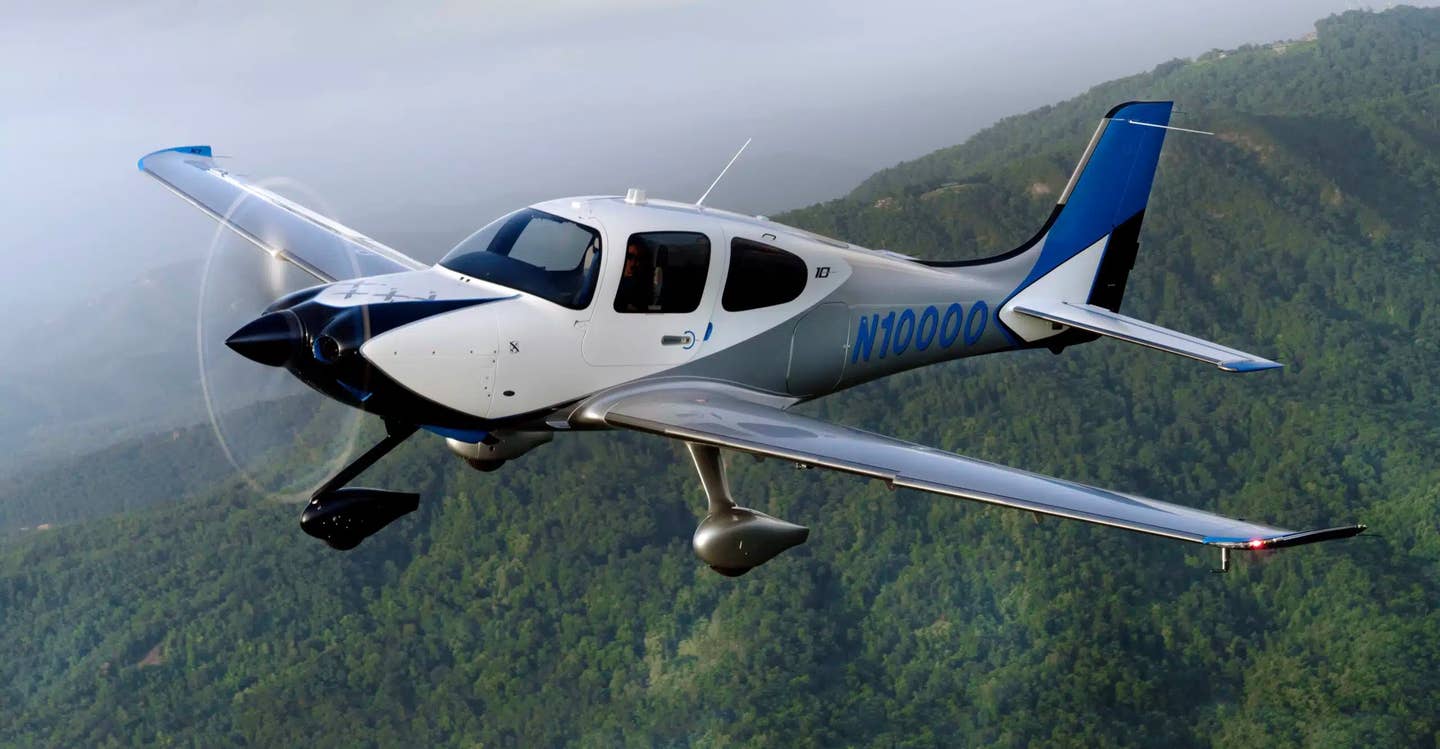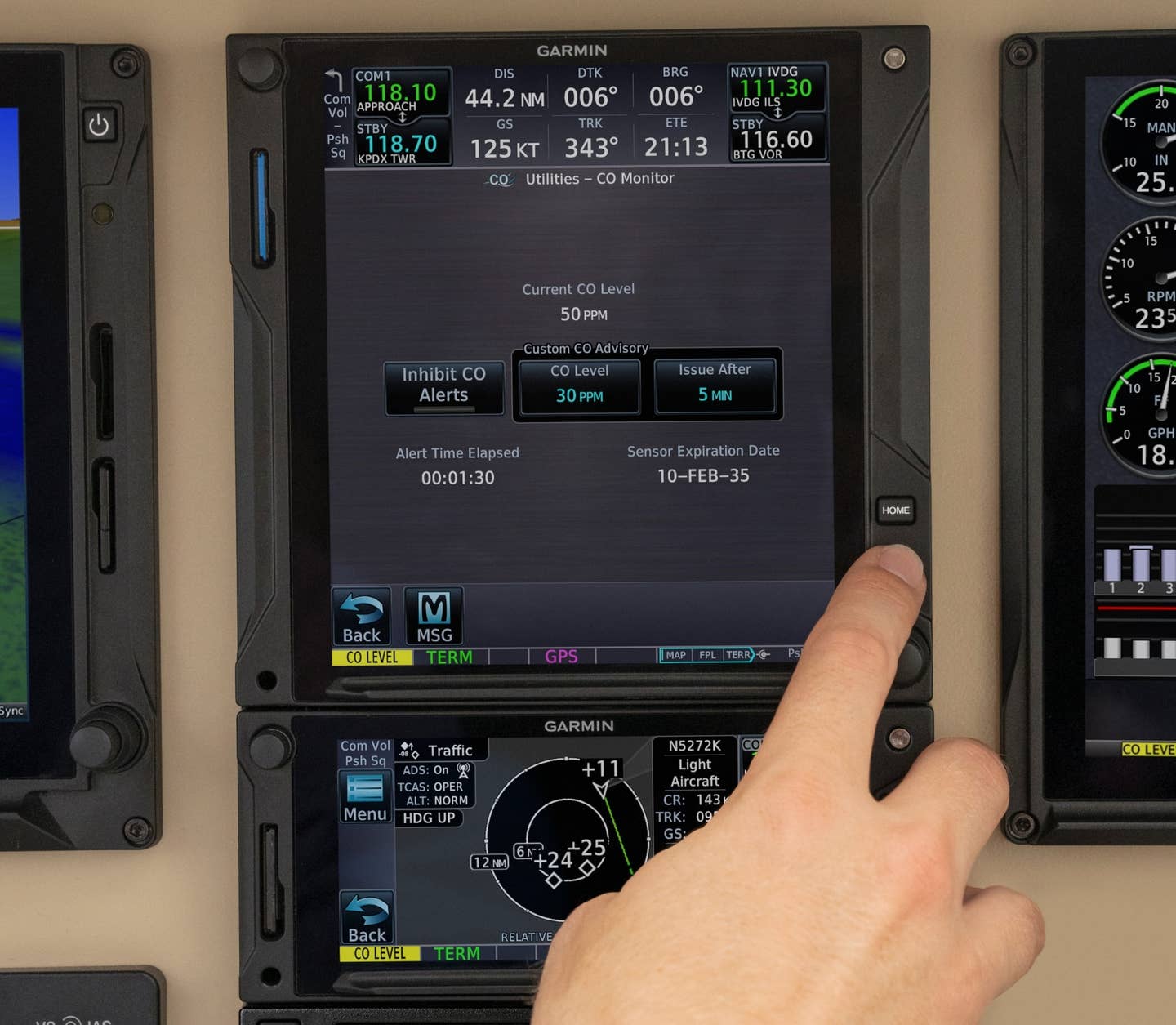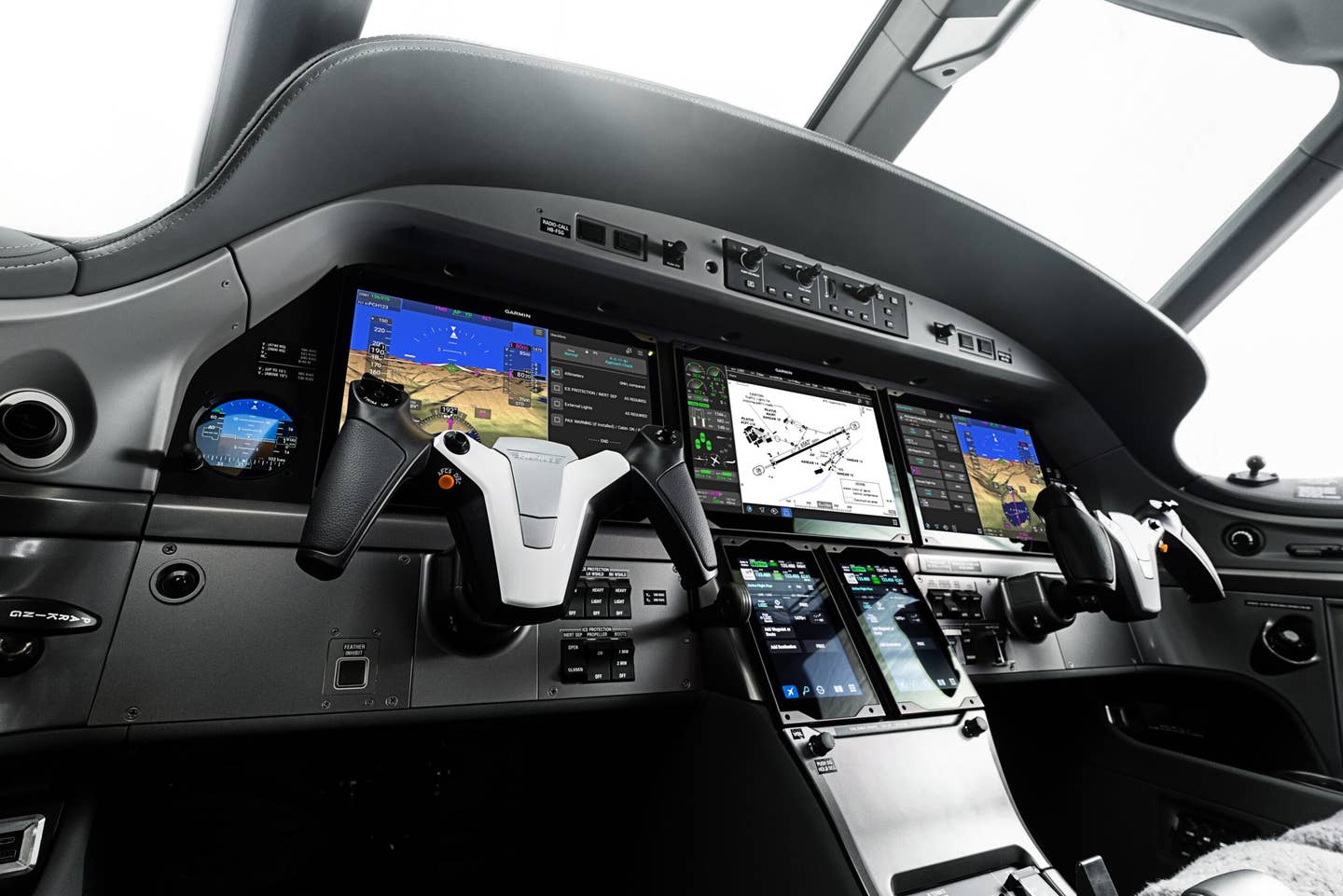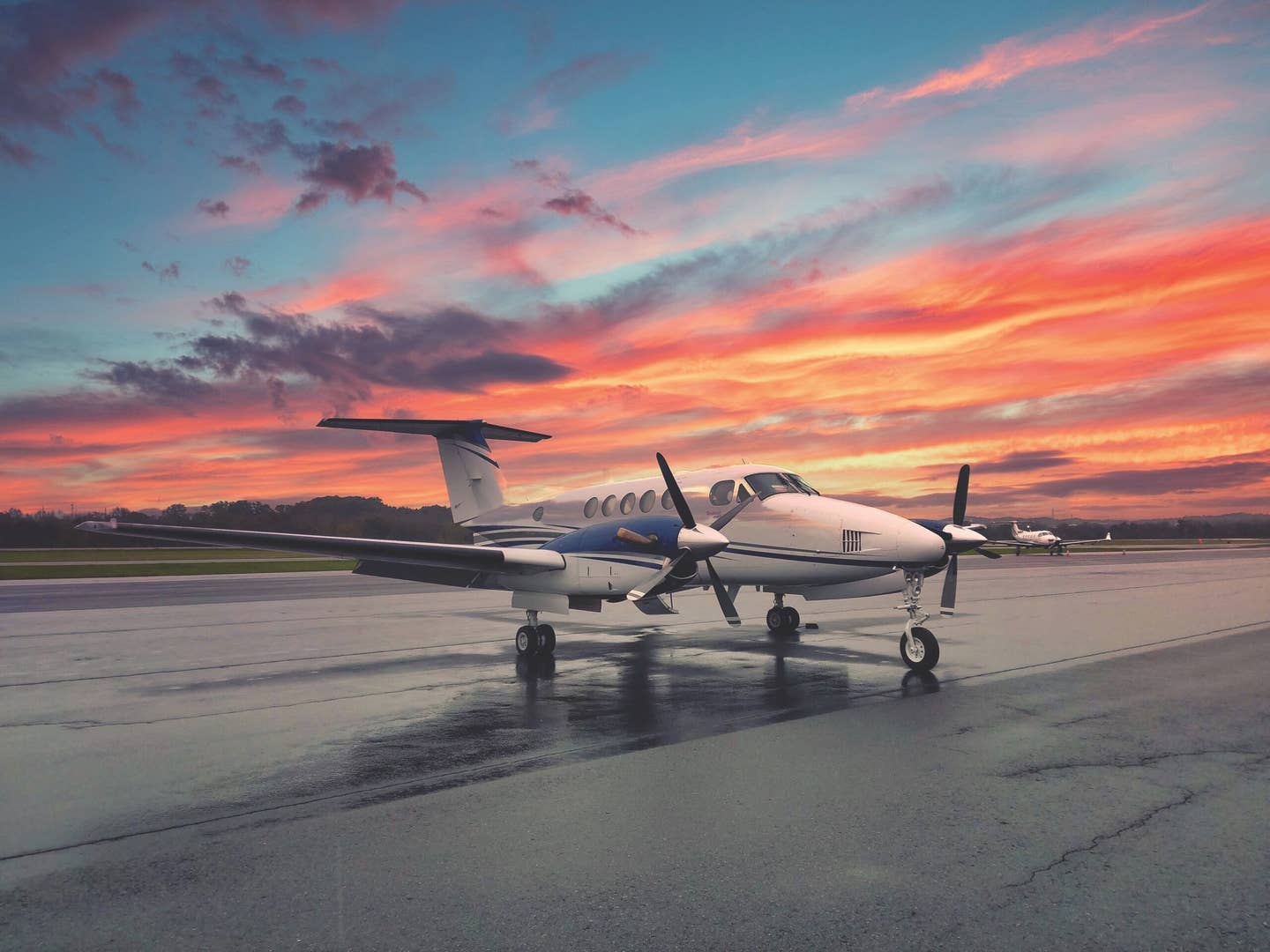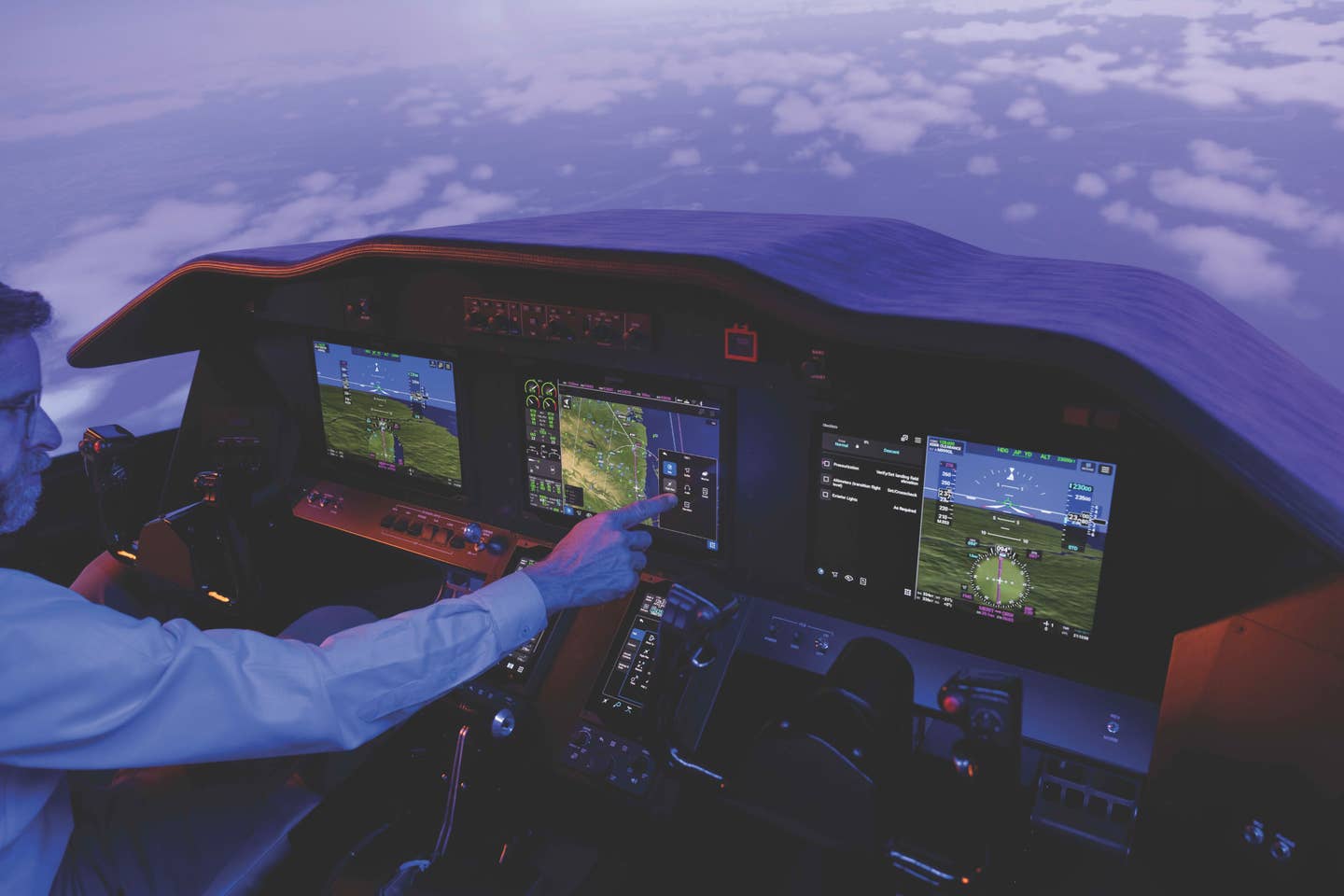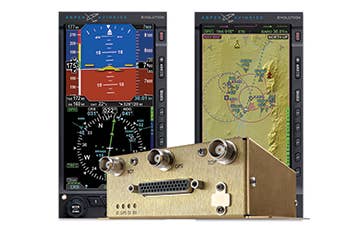
ADS-B. It's an acronym only an engineer's mother could love. Three letters followed by a hyphen and another letter hanging off in la-la land. What does it stand for again? Automatic Dependent Surveillance-Broadcast. What in the world does that mean?
Not only is ADS-B confusing, but it's expensive too. When all is said and done it'll end up costing taxpayers around $6 billion to build and deploy the nationwide ADS-B ground tower network and supporting computing infrastructure, not to mention hundreds of millions of dollars more each year to keep the system up and running. Meanwhile, aircraft owners will have to shell out thousands to upgrade ahead of the ADS-B mandate five years from now, on Jan. 1, 2020.
Believe us, we feel your pain. The good news is we're about to cut through the confusion to make understanding the coming ADS-B requirements as easy as following the direct-to magenta course line on your GPS receiver.
Well, maybe not quite that easy. But ADS-B needn't be nearly as confounding as you might think. After all, you don't have to worry about every piece of the ADS-B puzzle and how the technology applies to every airplane out there. You only have to worry about how you'll need to equip your airplane for the ADS-B mandate.
Before we delve into the discussion of exactly what ADS-B is and what it means for aircraft owners, let's clear up a couple of persistent misconceptions. First, the 2020 ADS-B mandate is a firm date. Don't count on a delay, except through an act of God or Congress, and maybe not even then. Here's why: The FAA needs your airplane and many thousands more to start flying with ADS-B gear so that its engineers can perform the nitty-gritty testing of the network that, right now, is all but impossible because so few airplanes are equipped.
If you're feeling a bit like the FAA's ADS-B laboratory rat, that's not a bad analogy. ADS-B is a key component of the Next Generation Air Transportation System, better known as NextGen, that will herald the transition from ground-based-radar air traffic control to something else. The FAA likes to call it a satellite-based system, but ADS-B relies on ground towers — more than 600 of them at last count — so that's a misnomer. Still, GPS is an important component of ADS-B since it uses satellites to transmit aircraft position data.
Which leads us to another related misreading of the ADS-B rule that has been repeated and retold so many times that people now take it pretty much as gospel truth. It seems that everywhere you look somebody is telling you ADS-B requires a WAAS-capable GPS receiver. That's not really true. What the rule says is you'll need an IFR-certified, ADS-B-compliant GPS position source. The fact is, however, that many older GPS receivers that were designed before ADS-B was planned don't include the necessary calculation integrity and accuracy that ADS-B needs to function. So you'll probably end up buying a WAAS GPS receiver if you don't already have one. Well, shucks.
OK, so now the confusion is probably setting in. Let's back up for a moment and talk about what ADS-B is and why you should care. You probably know all about the free weather data and traffic information that the technology can transmit to your cockpit, but that has nothing to do with the upcoming mandate. ADS-B exists to benefit ATC, and mostly because of steadily increasing airline traffic. Eventually it will replace radar as the main tool controllers use to keep aircraft from running into each other. (Although radar will still exist as a backup and you'll have to keep your old Mode C transponder, so really, what's the point of all this again?)
ADS-B is a new way for ATC to separate air traffic that doesn't rely on radar. Instead, each aircraft flying in ADS-B airspace will use GPS to determine its own position and automatically transmit it. These position reports over ADS-B are more accurate and update more quickly than radar, allowing for tighter aircraft spacing and higher traffic capacity in congested airspace. And finally, because ADS-B is a broadcast service that transmits data to other nearby aircraft and through ADS-R remote repeater towers, it offers an inexpensive way to provide traffic awareness to pilots.
So how does all this work? You've probably heard a lot of talk about ADS-B In and ADS-B Out. Maybe you're still wondering what the difference is, or maybe somebody told you but you forgot. This is pretty simple (we promise). ADS-B In is data that's sent to your airplane (think free FIS-B weather and TIS-B traffic), and ADS-B Out is position data (along with some other data) sent from your airplane to ATC and other nearby ADS-B-equipped airplanes. To meet the mandate you need an installed ADS-B Out transmitter (sorry, no portable gear) integrated with a compatible GPS receiver. ADS-B In isn't part of the mandate, but if you want to see that free weather data to save on your monthly XM Weather bill, you can purchase that gear also.
Here's where things get a bit murkier, but stay with us and you'll realize it's not that hard to understand. For a number of reasons, chief among them frequency congestion, ADS-B broadcasts over two different frequencies: 978 MHz and 1090 MHz. The 978 MHz frequency, commonly referred to as UAT (universal access transceiver), is used only in the United States and only below 18,000 feet, so it's a good choice for piston airplanes in this country (although upgrading to a 1090 Mode S transponder may be a cheaper option for many owners). What's also noteworthy about the 978 MHz frequency is that it's the only one over which free weather data is transmitted. The 1090 MHz transceiver, meanwhile, often referred to as 1090 ES (Extended Squitter), is acceptable for use everywhere in the world where ADS-B is mandated, and is required when flying at or above 18,000 feet in the United States.
So where, exactly, will ADS-B Out equipment be required? In the United States, the answer is pretty much everywhere a Mode C transponder is required today, namely in Class A, B and C airspace as well as Class E airspace above 10,000 feet but not below 2,500 feet. That's great news for Piper Cub and Aeronca Champ owners, who stay outside Mode C airspace. They won't have to worry about the 2020 mandate since the requirements for them won't change one iota. In fact, there will probably be tens of thousands of older general aviation airplanes for which owners will ultimately decide that the cost of upgrading for ADS-B Out just isn't worth it, experts say.
"Take pretty much any airplane with a hull value of under $30,000 and it will be tough for those owners to justify equipping for ADS-B," said Jim Alpiser, director of aftermarket sales for Garmin. Flight schools with airplanes that aren't worth much money but bring in consistent revenue, he said, will have no choice but to equip for the mandate, but recreational fliers who don't rely on their airplanes for serious transportation may opt to forgo ADS-B upgrades and fly only in uncontrolled airspace. Nobody's very happy about it, but it's the economic reality for some aircraft owners.
Older airplanes might also require more expensive modifications than newer ones to meet ADS-B compliance requirements. The owner of, say, an older Beech Debonair who will have to install not only an ADS-B Out-compliant transceiver but also a WAAS GPS receiver and new transponder could be looking at a bill of $15,000 or more in an airplane that might be worth only three or four times that much. "Then it comes down to personal choices by individual owners" about whether they want to continue flying their present airplane or look to upgrade to something of more recent vintage, Alpiser said.
The upgrade path for newer WAAS-capable G1000-equipped airplanes with Mode S transponders, meanwhile, is fairly simple and inexpensive, requiring only a slight hardware modification to the transponder and some STC paperwork. For owners of this category of airplane, the hard decisions come only when deciding whether to add an installed ADS-B In box to show free weather and traffic on the flight displays, or stick with a less expensive portable unit that displays this information on a tablet. Either way, you'll probably want the ADS-B In capability because otherwise the broadcast technology doesn't do anything for you.
Industry folks we spoke with said sales of ADS-B equipment have been slow up until now, but interest is starting to pick up as aircraft owners hear and heed the dire warnings about cutting it too close to the 2020 mandate. Many owners could face lengthy delays and sky-high installation prices as avionics shops raise their rates or eschew simple, one-off ADS-B mods in favor of pricier panel makeovers. A large number of customers now doing their homework on ADS-B installations, Alpiser said, are also considering other upgrades, such as adding a full Garmin G500 glass cockpit and GTN touch-screen navigators to extend the useful life of their airplanes.
Other avionics makers are noting this trend as well. John Uczekaj, CEO of Aspen Avionics, said customers asking about ADS-B are often also interested in upgrading to the company's compact flight displays, which are designed to slide into the space in the panel occupied by two round instruments. "We tend to get a lot of questions from customers looking for a lowest-cost solution to ADS-B," Uczekaj said. "They want to know what the minimum is they'll need to satisfy the mandate at the least possible cost."
A cockpit display, by the way, is not part of the ADS-B mandate. Aspen has a simple ADS-B configurator on its website that lets aircraft owners plug in information about their airplane and receive suggestions about the products that may make the most sense for what and where they fly. Prices for Aspen gear aren't bad either, with uninstalled prices starting at around $1,700 for a basic ADS-B In transceiver and rising to around $5,000 for higher-end ADS-B In/Out gear. The only problem is Aspen's ADS-B products are only just now hitting the market, so very few of them are flying.
That's been a concern for aircraft owners who want to be certain they're making the right decision when it comes to upgrading for ADS-B. Sure, several products are available today, but more are hitting the market all the time. A case in point is the new Lynx ADS-B product portfolio from L-3 Avionics Systems. The first boxes are due to be certified soon. L-3's sister company ACSS is a leader in ADS-B avionics for the air transport market, so there's reason for intrigue over what Lynx has to offer. Larry Riddle, vice president of marketing and sales for L-3 Avionics, promises the Lynx family will be a "game changer" for GA aircraft owners.
"Our goal was to eliminate the guesswork inherent in ADS-B and introduce a one-box solution that meets the ADS-B Out mandate, while going beyond what any other company is doing for NextGen," he said. The company plans to reveal further details soon about a broad NextGen "road map" that will bring even more capabilities to Lynx.
Still, while it might be smart to wait for new ADS-B products, at some point aircraft owners are going to realize their window of opportunity to upgrade for the lowest price is quickly closing. When that day will arrive is hard to say, but most insiders we spoke with agreed that shops will start becoming incredibly busy by the 2018 time frame. Supply and demand being what it is, installation prices could rise significantly by then.
If you don't want to wait any longer, Garmin has a full range of ADS-B products available for installation right now. You just need to pick up the phone and call your dealer. Another choice for owners of GA piston airplanes is the RANGR ADS-B product line from FreeFlight Systems. These all-in-one boxes offer full ADS-B rule compliance, plus value-added extras like integrated Wi-Fi that lets you view ADS-B weather and traffic on your iPad. Prices for the FreeFlight gear also tend to be fairly reasonable, with the top-of-the-line RANGR FDL-978-XVR ADS-B universal access transceiver selling for a list price of $5,495.
Some other fairly low-cost ADS-B solutions include the equipment sold through Trig and NavWorx. Trig's ADS-B Out upgrade includes the TT21 Mode S transponder with ES capability and a separate TN70 WAAS GPS receiver with antenna and installation kit, for a price of around $6,000 for both. NavWorx, meanwhile, offers a 978 UAT box, called the ADS-600BG, that includes an ADS-B Out transmitter, ADS-B In receiver, GPS receiver and an optional Wi-Fi adapter for transmitting weather and traffic data to an iPad. The base price for the unit is $3,299. The NavWorx box is compatible with many multifunction displays as well.
Avidyne, meanwhile, offers a version of its TAS600 traffic advisory system that is ADS-B Out compliant, providing an even higher level of traffic awareness. Avidyne also sells the AXP340 Mode S ES transponder, an ADS-B-compliant plug-and-play replacement for BendixKing KT76A/KT78A transponders that sells for a retail price of around $4,000. Its new MLB100 ADS-B In receiver, meanwhile, sells for $2,495. BendixKing, as well, offers its own ADS-B-compliant boxes.
Whatever ADS-B upgrade path you decide to take, you can rest assured that the FAA won't change the requirements between now and 2020, so there's no reason to wait if an option you like is available. If instead you want to lay a wager that a better ADS-B solution is just around the bend, be careful you don't wait too long to make up your mind. Lead times for ADS-B work at shops we talked to are already stretching to several weeks, and once the mad rush of customers arrives with checkbooks in hand, it might be tough to receive your hardware before the clock strikes midnight on Dec. 31, 2019. You don't want to wake up on Jan. 1 with an ADS-B hangover because your airplane is suddenly grounded.
Upgrade Choices
Different aircraft will require different ADS-B equipment depending on where they fly and what's in the cockpit already. For some airplanes, meeting ADS-B requirements will be as easy as a simple Mode S transponder modification and some STC paperwork. Other owners will want to consider a total panel makeover to add life to their airplanes. Here's a look at five very different airplanes and how their owners might decide to prepare for the ADS-B mandate.
Cessna Citation CJ2
The airplane: A 400-knot, six-passenger business twinjet equipped with Rockwell Collins Pro Line 21 avionics, dual Garmin GTX 327 Mode C transponders and dual non-WAAS GNS 530 GPS receivers.
The ADS-B In/Out solution: Upgrade to dual Garmin GTX 330 Mode S transponders with Extended Squitter, dual GNS 530W WAAS GPS receivers and a GDL 88 ADS-B In datalink transceiver.
The price: $20,887 plus installation
Beechcraft Baron B55
The airplane: A 1980s vintage cabin-class twin with older panel-mount GPS receiver, steam gauge instruments and a Mode C transponder on its last legs.
The ADS-B In/Out solution: Upgrade to dual-display Garmin G500 cockpit with dual Garmin GTN 750 WAAS navigators, GTX 330 Mode S transponder and GDL 88 datalink transceiver.
The price: $38,561 plus installation
Cirrus SR22 G3
The airplane: A high-performance piston single equipped with the Garmin Perspective glass cockpit.
The ADS-B In/Out solution: Upgrade the Mode S transponder for ADS-B 1090 ES and add a Garmin GDL 88 datalink transceiver.
The price: $4,579 plus installation
Cessna 172N
The airplane: A late-1970s vintage Skyhawk with basic navcom radios, Mode C transponder and a portable GPS receiver.
The ADS-B In/Out solution: Add a FreeFlight RANGR FDL-978-XVR UAT transceiver with integrated WAAS GPS and Wi-Fi for weather and traffic on an iPad.
The price: $5,495 plus installation
Van's RV-7
The airplane: A hot homebuilt owned by a budget-constrained flier who wants to spend as little as possible on certified ADS-B gear.
The ADS-B In/Out solution: Add a NavWorx ADS-600BG UAT unit with ADS-B Out/In capability and built-in WAAS GPS.
The price: $3,299 plus installation
Get online content like this delivered straight to your inbox by signing up for our free enewsletter.

Sign-up for newsletters & special offers!
Get the latest FLYING stories & special offers delivered directly to your inbox

